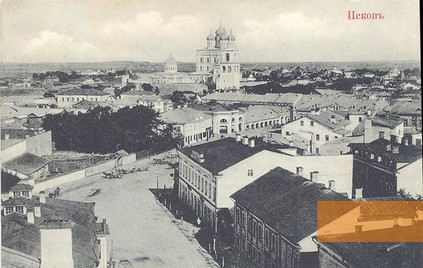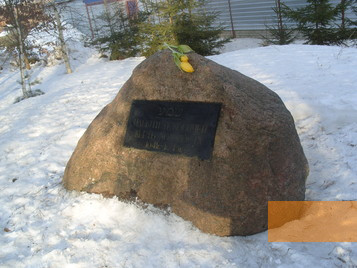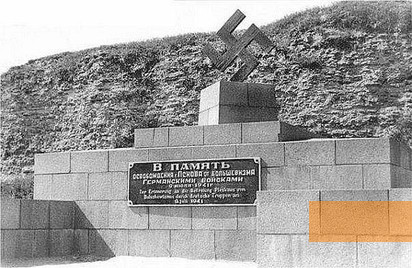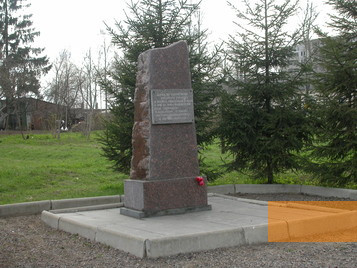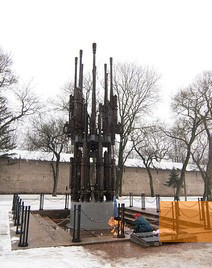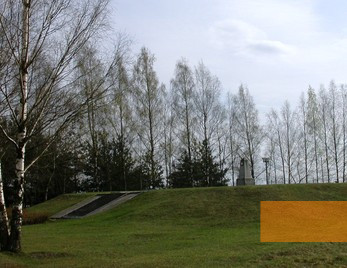In Pskov (German: Pleskau) in Northwest Russia are various memorials remembering the fallen of World War II and the victims of the German occupation from 1941 to 1944.
On July 9, 1941 – barely three weeks after the German attack on the Soviet Union – the German Wehrmacht marched into Pskov, one of the oldest Russian towns. Only few inhabitants had been evacuated. 1,000 of the 60,000 residents were of Jewish »nationality«. In the area around Pskov the Einsatzgruppe A (mobile killing unit) was deployed, who conducted mass shootings especially on Jews. The non-Jewish population fell victim to the German policy of starvation. Between December 1942 and spring 1943 the paramilitary Todt Organisation (German: Organisation Todt) converted a manor house near Pskov to the Führer headquarter »Wasserburg« which, however, was never used by Adolf Hitler and his staff of command but was consigned to the Army Group North (German: Heeresgruppe Nord). From summer 1942 the partisan movement in the area grew stronger. The German occupation forces burned down numerous houses, especially during so-called retaliation measures in 1943/44, destroyed various villages and killed tens of thousands of civilians. Between March 1942 and July 1944 about 11,000 people from Pskov were abducted to the German Reich as forced labourers. On July 23, 1944 the town was retaken by the Red Army.
According to Russian estimates approximately 225,000 people died during the German occupation in the Pskov area (Russian: Pskovsaya Oblast), mainly civilians and Russian prisoners of war.
Shortly after the end of the war first memorials for the fallen soldiers of the Red Army were erected in the town of Pskov. In the 60s and mainly in the middle of the 90s more memorials followed – for instance on the sites of former camps like Stalag 372 and the »sickbay«, where 43,200 Soviet prisoners of war died on the grounds of a former school. Only in 2003 – initiated in 1999 by the council of the town's Jewish organisations – a memorial dedicated the »Victims of the Holocaust« was opened to the public on the site of mass shootings in the nearby village of Luchnovo. There is also a small Holocaust museum.
- Name
- Pamiatnyje znaki w Pskowe
- Open
- Most memorials are accessible at all times.


